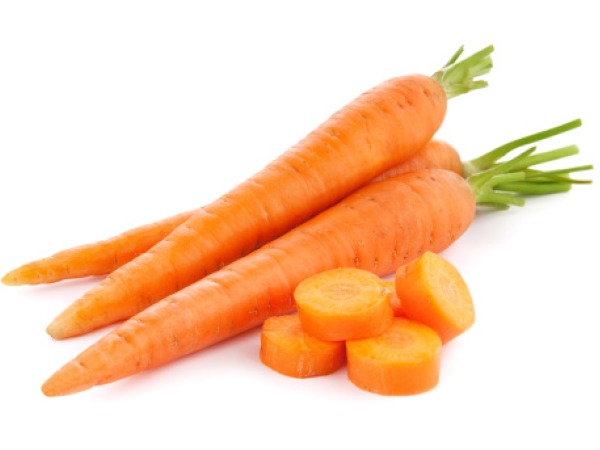Aphrodisiacs have long been part of the cultural heritage on all parts of the world. Almost everyone is preoccupied with the propagation of the species; and keeping it all the more worthwhile and exciting became part of every culture’s practices and interests even if considered taboo by the prevailing ideology.
Asia has its share in the use of aphrodisiacs. In fact, even with all these population explosion problems and the demise of the population of several endangered species, consumption of these aphrodisiacs is still practiced and highly sought after.
It’s as if it’s as important as, say, special occasions or community activities. Actually, it’s a personal take but, judging from what I have been seeing, it’s even a lot more.
When it comes to keeping the love alive, nothing is more proven than aphrodisiacs. More than a dose of mystical love potions, these ingestible igniters of sexual desires have been long associated with love, romance and passion.
Most common aphrodisiacs have been known to produce substances in our body that heightens our sensuality and increases our blood flow. If so, in a sense, it is also a sort of love potion. Anyways, here are some common aphrodisiacs that may come your way.
SWEETS
Chocolate, with its rich and sweet flavor and smooth creaminess, has compounds that simulate the feelings you get when you are in love. Eat lots of this and over time you’ll be saying good bye to your beautiful teeth, or worse, there’s a sickness called diabetes. So, take this only occasionally.
HERBS
Herbs are known for their healthful properties as well as aphrodisiac qualities. A happy, healthy love life requires two happy, healthy people. Herbs can help. Be careful though. Take only herbs that are used for cooking. Some medicinal herbs are poisonous when not prepared properly. Maybe instead of leading a happy love life, you end up with an untimely death.
Basil - The fresh leaves have an alluring aroma.
Cilantro - also known as Coriander, is a pungent herb that promotes vigor, and heightens emotions and arousal, especially for women.
Oregano – O-re-ga-no, O-re-gan, Or-gan. The Italian herb has more going for it than you know!
Rosemary - Heightens memory and improves circulation. Take it and you won’t forget.
Saffron - A stimulating, expensive herb, saffron has an association with luxury.
Thyme - This herb contains many antioxidants that keep your cells humming along. Antioxidants also help reduce the occurrence of cancer.
SPICES
Spices have been considered aphrodisiacs by many cultures around the world. Their intense flavor surely must jump start two sweethearts' love life.
Chili Powder - Highly flavorful and often very hot. Its intensity can add to yours. Caution: Hot. Take only what you can handle.
Cinnamon - Sweet but stimulating, cinnamon increases blood flow.
Clove - Exotic spice that boosts your energy, energy to last the night.
Fennel - This tasty seed increases sex drive.
Ginger - Another flavorful, hot spice that can add a jump to your love life.
Nutmeg- A spice with a complex aroma that excites the imagination.
Vanilla - The smell alone increases blood flow and is especially enticing for older men. When you’re old and nothing happens, try Viagra.
SEAFOOD
Seafood has often been associated with the ability to arouse sensual feelings, because they are rich in protein.
Caviar - An exotic food that promotes sensuousness.
Oyster - Raw oysters, perhaps it’s the texture or the flavor, have long been considered an aphrodisiac.
Salmon - Rich, deeply flavorful fish that stimulates the appetite.
Tuna Steak - A food that creates a boisterous, happy well being (especially when grilled).
FRUITS
Aside from their vitamin and mineral rich properties, fruits often play our imaginations because of their close resemblance to the human organs that are associated and involved in sex.
Apricot - Plump and sweet flavored, apricots where thought by the Chinese to indicate a romantic, sensual nature.
Banana - Shape, sweetness, and texture promotes sensuality.
Cherry - These delectable fruits are said to arouse desire, especially in women.
Date - Rich and exotic, dates are considered aphrodisiacs for women.
Peach - Succulent, juicy, and flavorful, a ripe peach is a sensual treat and promotes interest in other sensual treats!
Pear - A ripe pear with sweet juice... yummmmmmmy.
Fig - A soft, ripe fig has an incredible sweet flavor, just perfect for sharing with your love.
Papaya - Tropical and exotic, excellent for nibbling.
Strawberry - Just-picked, perfect strawberries are ideal for dipping in chocolate, or savoring on their own.
Avocado - Rich and creamy, considered an aphrodisiac especially for women.
VEGETABLES
A lot of people consider vegetables dull like something that they eat because they've been told. "Vegetables are good for you." They are, but perhaps, not in the way you expected. Like fruits, they too are very suggestive.
Asparagus - Long stems and succulent tips that can be quite suggestive.
Carrot - All root vegetables draw power and intensity from the earth and can transfer that power and intensity to your love life.
Celery - Great for pepping up your blood flow.
Cucumber - Just its shape alone gives people ideas.
Radish - Another root vegetable that's crisp, allowing you to sink your teeth into it.
Turnip - A rather dull looking vegetable, but turnips gives strength to soups, stews, and you.
Zucchini - Similar to a cucumber.





























